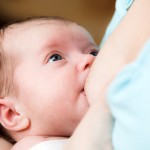
During bottle-feeding infants are make more passive movements of the muscles or the lips and tongue than are required during breastfeeding. The more active movements involved in breastfeeding are considered to promote better occlusal development and correct growth of the orofacial structures. These benefits are thought to extend into the mixed dentition phase.
The aim of this review was to assess if the duration of breastfeeding had an effect on occlusal development.
Methods
Searches were conducted in the Pubmed, Embase, Scopus and New York Academy of Medicine Grey Literature Report databases. Two reviewers independently selected studies, abstracted data and assessed study quality using the Newcastle-Ottawa Scale. Randomized controlled trials (RCTs), case-control studies and cohort studies were considered for inclusion.
Odds ratios (OR) of associations between different lengths of breastfeeding (no breastfeeding, less than six months’ breastfeeding, over six months’ breast- feeding, over twelve months’ breastfeeding) and class II molar, openbite, non-spaced dentition and posterior crossbite were calculated.
Results
- 31 studies were included.
- Study quality was considered to be moderate to high in all 31 studies.
- Sample sizes ranged from 80-2026
- The relationship between breastfeeding and
- posterior crossbite in mixed dentition was examined in 12 studies
- overbite/anterior openbite in primary dentition was examined in 14 studies
- development of occlusion/malocclusion in primary dentition was examined in 9 studies
- overjet/anterior crossbite in primary dentition was examined in 6 studies
- presence/absence of interdental spaces in primary dentition 3 studies
- 9 studies contributed to various meta-analysis
- Children who were not breastfed presented with more posterior crossbite than those who had been breastfed for between one and six months OR = 1.70, (95%CI; 1.22–2.39) [2 studies].
- Comparing children who had not been breastfed with those who had been breastfed for over six months, the OR for posterior crossbite = 3.76 (95%CI; 2.01–7.03) [2 studies].
- Comparing no breastfeeding with breastfeeding for over twelve months OR= 8.78 (95%CI; 1.67–46.1) [2 studies].
- Children who were breastfed for up to six months presented with more Class II relationship than those who had been breastfed for over six months, OR = 1.25 (95%CI; 1.01–1.55) [4 studies
Conclusions
The authors concluded: –
breastfeeding is a protective factor against posterior crossbite and class II malocclusion in primary and mixed dentition. The protective effect increases in line with the months of breastfeeding. There is no clear evidence for breastfeeding providing protection against other malocclusion risks such as openbite.
Comments
In considering the findings of this review it is important to note that almost all of the included studies collected the breastfeeding data using retrospective questionnaire which raises the issue of recall bias. This may have been avoided in the 3 longitudinal studies included. Only 9 studies contributed to the meta-analysis which considered various aspects of malocclusion. Of the 11 meta-analyses presented in the paper 8 involve only two studies.
Large well conducted prospective cohort studies with contemporaneous recording of breastfeeding and other potential confounders such as non-nutritional sucking habits and the use of baby feeding bottles are needed to help resolve the debate of the impact of breastfeeding on malocclusion.
Links
Primary paper
Boronat-Catalá M, Montiel-Company JM, Bellot-Arcís C, Almerich-Silla JM, Catalá-Pizarro M. Association between duration of breastfeeding and malocclusions in primary and mixed dentition: a systematic review and meta-analysis. Sci Rep.2017 Jul 11;7(1):5048. doi:10.1038/s41598-017-05393-y. PubMed PMID: 28698555;PubMed Central PMCID: PMC5505989.
Other references
Original review protocol on PROSPERO
